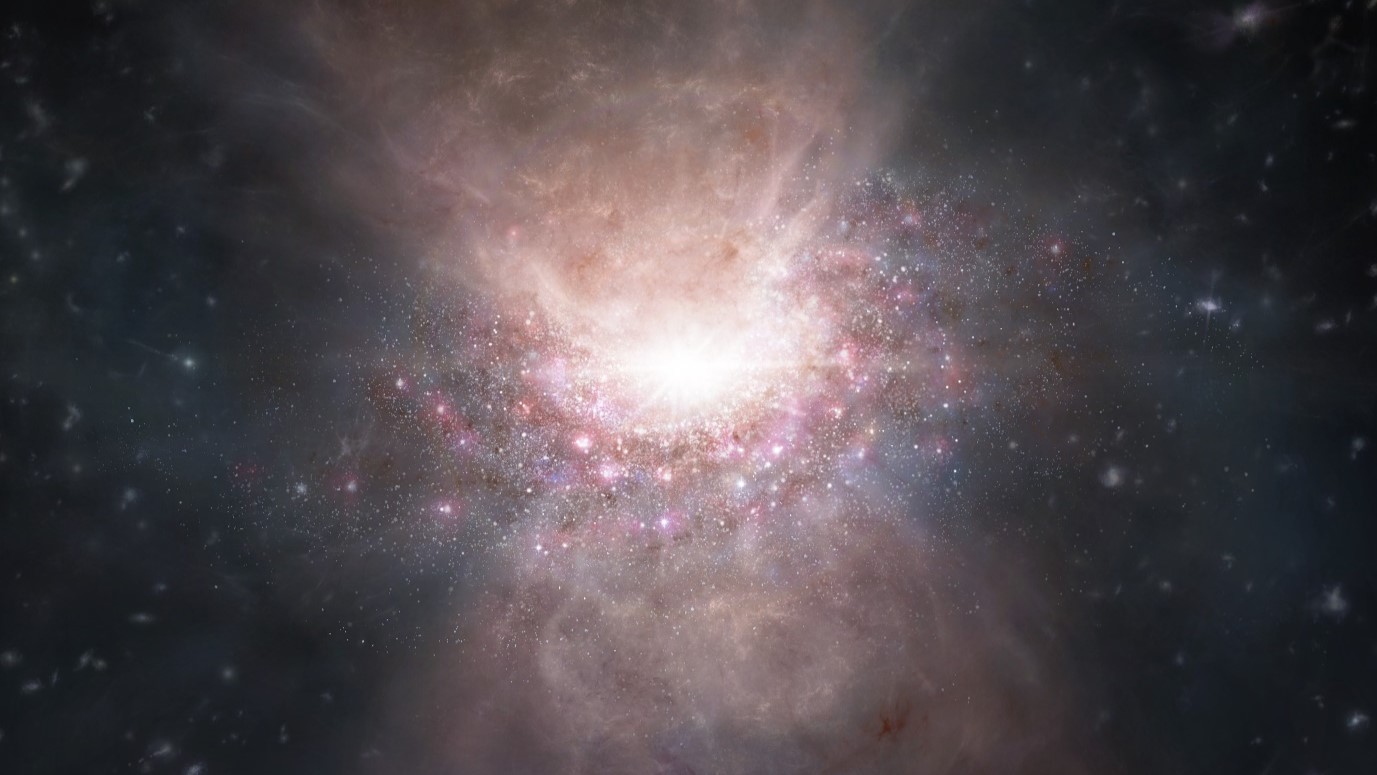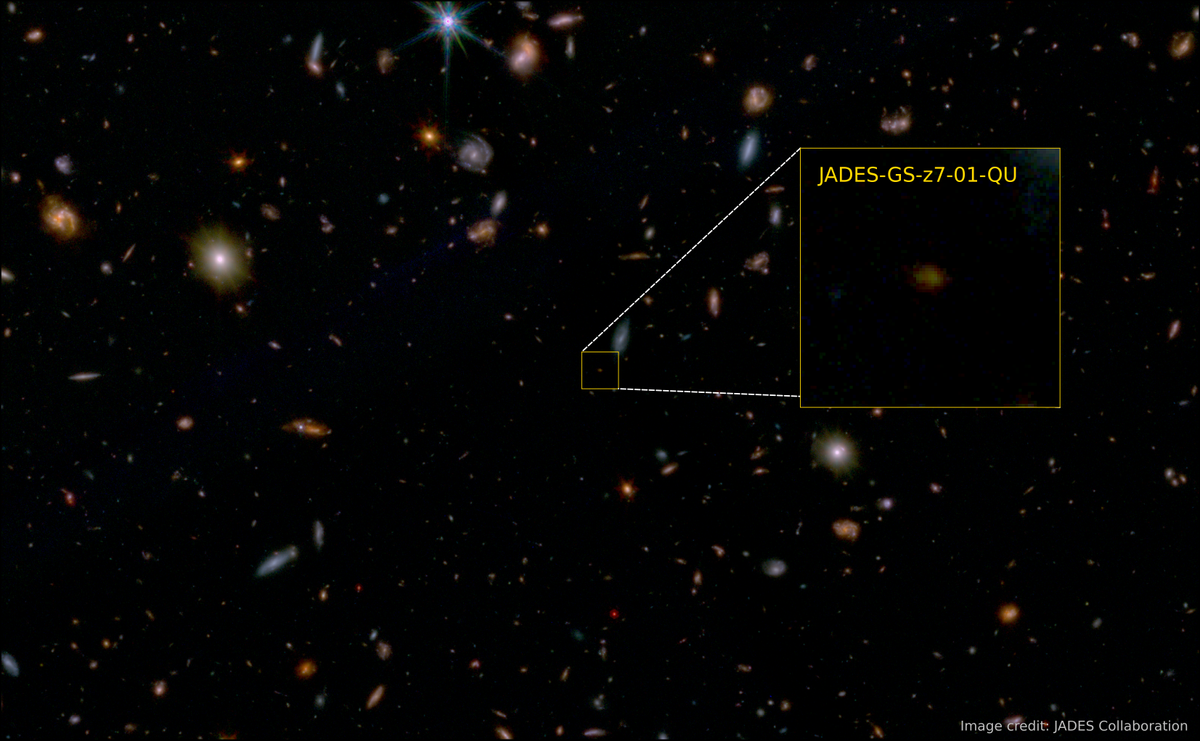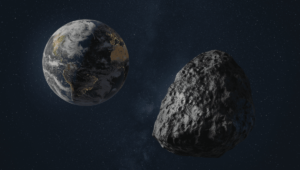Astronomers using the James Webb Space Telescope (JWST) have discovered the oldest “dead” galaxy ever seen — but the cosmic corpse has left scientists puzzled as it defies explanation by our current knowledge of the early cosmos.
The galaxy suddenly and mysteriously halted star formation when the universe was just 700 million years old, when countless stars were birthing thanks to an abundance of pristine gas and dust elsewhere in the universe.
The galaxy, named JADES-GS-z7-01-QU and described in a paper published Wednesday (March 6) in the journal Nature, provides astronomers with a peek into the elusive underpinnings of galaxy evolution in a primordial universe, including why galaxies stop forming new stars and whether forces driving their starbursts alter across epochs.
“Galaxies need a rich supply of gas to form new stars, and the early universe was like an all-you-can-eat buffet,” study lead author Tobias Looser, a researcher at the University of Cambridge’s Kavli Institute for Cosmology, Cambridge (KICC), said in a statement.
Related: ‘Mind-blowing’ James Webb telescope images reveal 19 spiral galaxies in the greatest detail ever seen
Current models cannot explain how the newfound galaxy not only took shape in less than a billion years after the Big Bang, but also shut down its star factory so quickly. “It’s only later in the universe that we [usually] start to see galaxies stop forming stars,” study co-author Francesco D’Eugenio, also a researcher at KICC, said in the statement. In comparison, a handful of other “dead” galaxies found elsewhere appear to have paused forming new stars when the universe was about 3 billion years old, the researchers said.
“Everything seems to happen faster and more dramatically in the early universe,” added Looser. “And that might include galaxies moving from a star-forming phase to dormant or quenched.”
To discover JADES-GS-z7-01-QU, Looser and his colleagues used the JWST’s powerful infrared vision to peer through the thick veil of dust obscuring the earliest objects in the universe. In addition to being the oldest “dead” or “quenched” galaxy spotted so far, the newfound galaxy is also many times lighter than other similarly quiescent galaxies previously found in the early universe.

Some early galaxies seem to have lost their star-forming gas to intense radiation from hyperactive black holes, such as the quasar J2054-0005 seen only 900 million years after the Big Bang in this artist’s illustration. (Image credit: ALMA (ESO/NAOJ/NRAO)))
JWST’s data suggest the galaxy intensely formed stars for somewhere between 30 million to 90 million years before it rapidly shut off, although precisely what ended it is still unknown. Astronomers know of a couple different factors that can slow down or extinguish star formation. For instance, turbulence inside a galaxy, such as radiation emitted by a supermassive black hole, can push gas out of the galaxy and starve it of the gas reservoir it relies on to form stars. Another intriguing possibility is that the galaxy’s surroundings at the time did not sufficiently replenish the gas reservoir being consumed by birthing stars, leading to a deficit in star-forming material.
However, “we’re not sure if any of those scenarios can explain what we’ve now seen with Webb,” study co-author Roberto Maiolino, an astrophysicist at KICC, said in the statement. Current models based on the modern universe are unable to explain the properties of JADES-GS-z7-01-QU, suggesting they “may need to be revisited,” Maiolino said.
Another possible explanation for the new galaxy’s dormancy could be that “galaxies in the early universe ‘die’ and then burst back to life,” D’Eugenio said. However, previous research of “dead” galaxies from when the universe was around 3 billion years old — a time of its most prolific star birth — suggested such “dead” galaxies cannot rejuvenate even via mergers with nearby galaxies, which instead only serve to “puff” them up.
“We’ll need more observations to help us figure that out,” said D’Eugenio.


